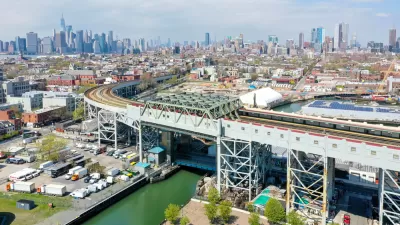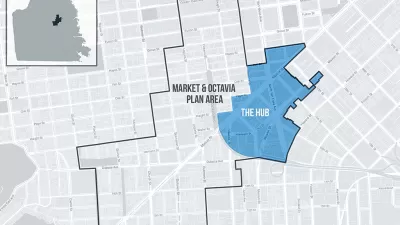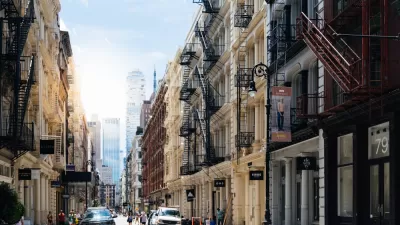Vast amounts of tech money have transformed the city's commercial spaces in unexpected ways.

Adrian Daub takes a closer look at the area around Church and Market streets in San Francisco to better understand the phenomenon of commercial spaces remaining empty after businesses have been priced out:
[Sparky’s diner] was first to go: in 2015 rent suddenly went up, the diner’s owner refused to pay, and Sparky’s was no more. Our usual ideas about gentrification suggest neighborhood standbys get replaced by fancy boutiques and brunch-centric eateries. Instead, after Sparky’s came … nothing. Elsewhere, too, long-term leases timed out, rents increased, and the old neighborhood hangouts disappeared.
The area has seen huge growth in the number of residents and upscale residential developments, but storefronts remain unoccupied, says Daub. "Developers make their money with luxury apartments aimed at high-salaried tech workers, while ground floor retail is an architectural and economic afterthought: giant spaces that any business would have trouble filling with life and justifying financially."
Daub points to California’s Proposition 13 and the cap on property taxes as a factor in this market dynamic. "Owners may pay Nixon-era property tax rates, while renting out those spaces at rates that have exploded in the last 40 years. They, too, can afford to let buildings sit empty."
San Francisco highlights the link between the technology industry and capitalism and the change that ingenuity and money can bring, says Daub. "But walk through parts of San Francisco today, and you get a different sense altogether: not an uncanny effectiveness, but a panicked swirl of homeless capital."
FULL STORY: Abandoned stores, empty homes: why San Francisco's economic boom looks like a crisis

Planetizen Federal Action Tracker
A weekly monitor of how Trump’s orders and actions are impacting planners and planning in America.

San Francisco's School District Spent $105M To Build Affordable Housing for Teachers — And That's Just the Beginning
SFUSD joins a growing list of school districts using their land holdings to address housing affordability challenges faced by their own employees.

The Tiny, Adorable $7,000 Car Turning Japan Onto EVs
The single seat Mibot charges from a regular plug as quickly as an iPad, and is about half the price of an average EV.

As Trump Phases Out FEMA, Is It Time to Flee the Floodplains?
With less federal funding available for disaster relief efforts, the need to relocate at-risk communities is more urgent than ever.

With Protected Lanes, 460% More People Commute by Bike
For those needing more ammo, more data proving what we already knew is here.

In More Metros Than You’d Think, Suburbs are Now More Expensive Than the City
If you're moving to the burbs to save on square footage, data shows you should think again.
Urban Design for Planners 1: Software Tools
This six-course series explores essential urban design concepts using open source software and equips planners with the tools they need to participate fully in the urban design process.
Planning for Universal Design
Learn the tools for implementing Universal Design in planning regulations.
Smith Gee Studio
City of Charlotte
City of Camden Redevelopment Agency
City of Astoria
Transportation Research & Education Center (TREC) at Portland State University
US High Speed Rail Association
City of Camden Redevelopment Agency
Municipality of Princeton (NJ)





























